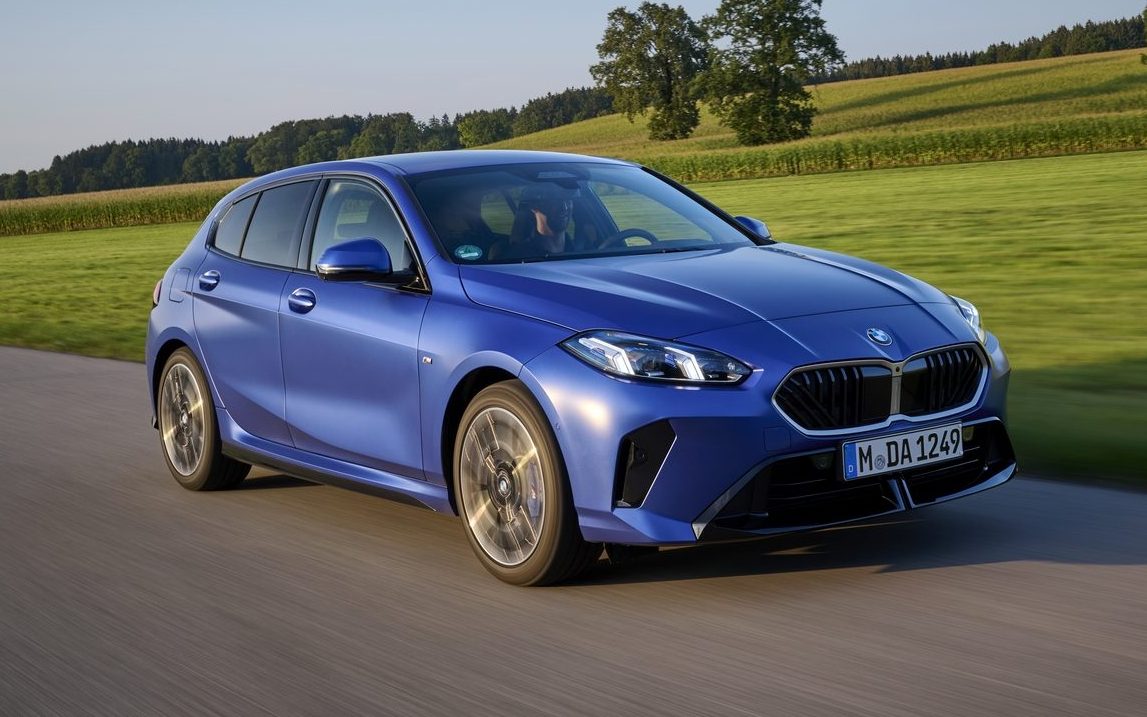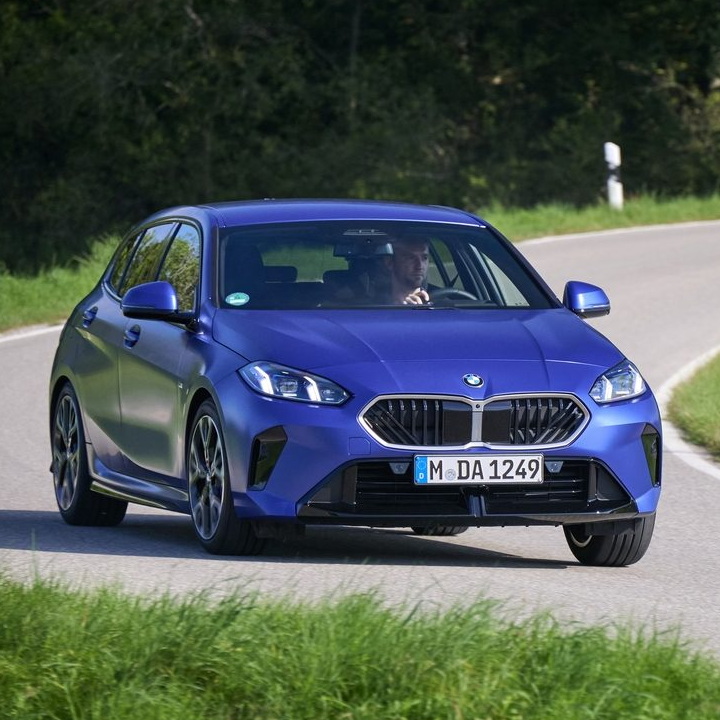BMW 1 Series 2024 review: Big updates for BMW’s compact hatchback
One for the drivers
Styling cars is difficult. First, you have to be able to draw, which counts me out straight away, and then you have to draw something that not only allows the headlights to be at the required height and allows the car’s structure to fit under the panels, but also still looks attractive. This is where BMW has struggled of late, thanks in no small part to the hamster-tooth grilles of the 4 Series models and the overall hideousness of the XM.
And, on the face of it, the struggles are continuing. You could have criticised the old 1 Series for any number of things, from the slightly awkward silhouette to the adoption of front-wheel-drive (enthusiasts still consider BMW to be a rear-wheel drive firm). But the overall design — the size of the grille, the angle of the headlights and the combination of muscularity and compactness — really wasn’t too bad. So obviously, BMW had to change it.
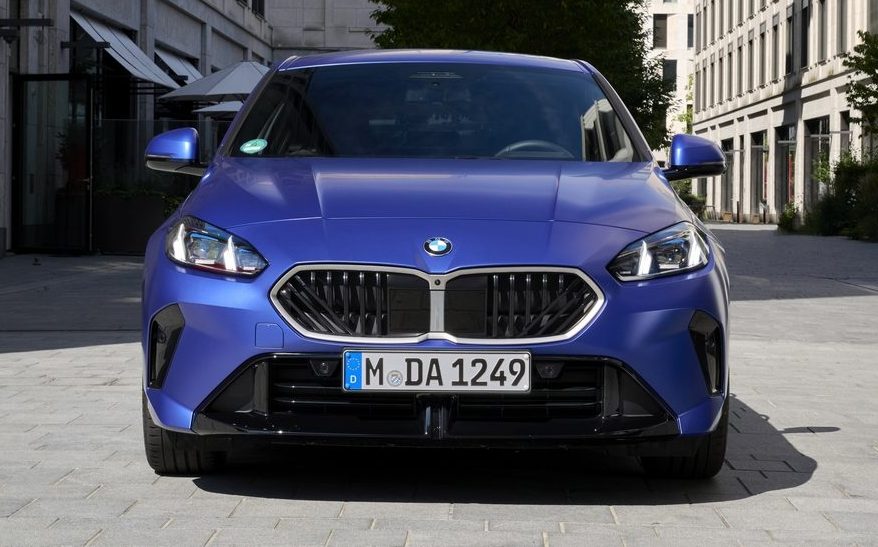
The new 1 Series’ press material speaks of many “good things”, from the new mild-hybrid technology under the bonnet to the improved software in the touchscreen, but it glosses over the new nose, which looks much better in pictures than it does up close. It’s droopier than before, somehow, as if the BMW design executives watched the old Peugeot 206 advert — the one with the old Ambassador and the elephant — and thought “that looks like a good idea”.
And though the grille is smaller than before, it’s wider and flatter, which only adds to the impression that the nose has been squashed. It’s now the Mike Tindall of hatchbacks.
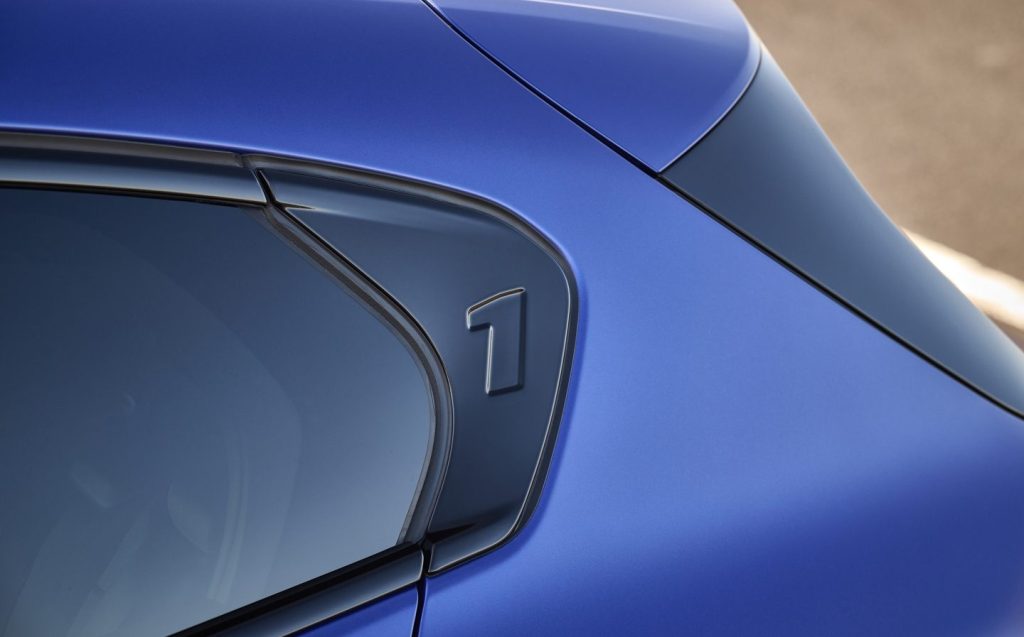
Some of the details are a bit naff, too, including the new “1” graphic on the rearmost roof pillar, which is completely unnecessary and, because of the way the Germans write the number one, it also looks a bit like a seven. And let’s be honest, nobody over the age of 13 wants to look as though they’re wearing Cristiano Ronaldo-branded gear.
In fairness, the rear end actually looks rather good, especially if you get the M135 version with its four tailpipes. And if you’re an anorak wondering where the old M135i’s “i” has gone, then a) you need to get out more, and b) it has been dropped because BMW’s marketing people thought it confusing alongside the i-branded electric cars.
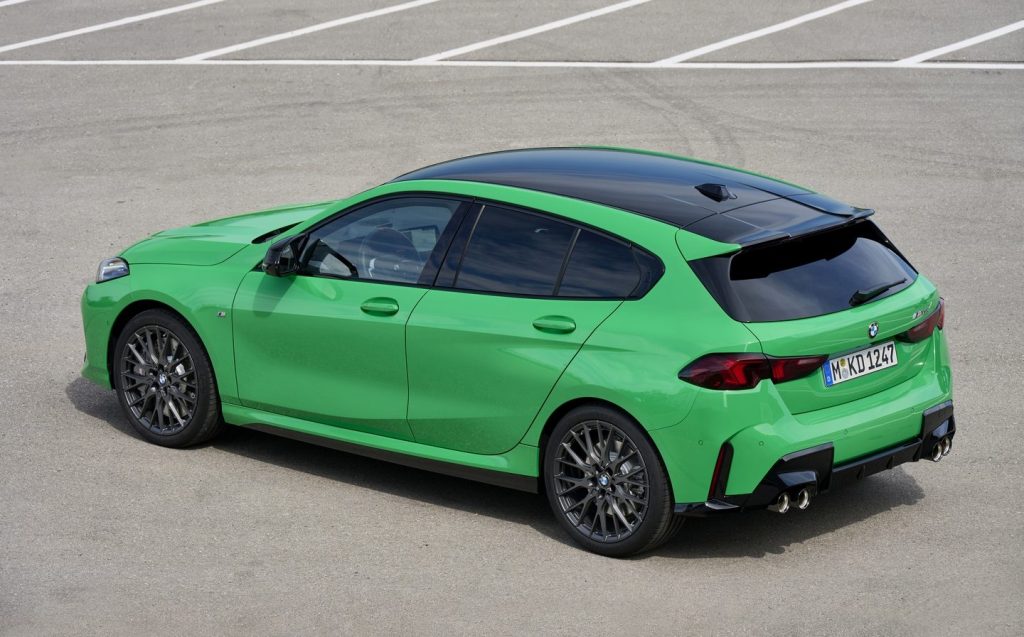
On, then, to the interior, where BMW has made yet more changes. Truth be told, most of them do count as improvements, with the most obvious being the addition of the “Curved Display” that seems to be in every new BMW model since the iX came out. Combining the touchscreen and digital instrument display in one housing, it’s supposed to make the car look more modern, and in tandem with the decision to almost completely remove physical switchgear from the dashboard, that has worked.
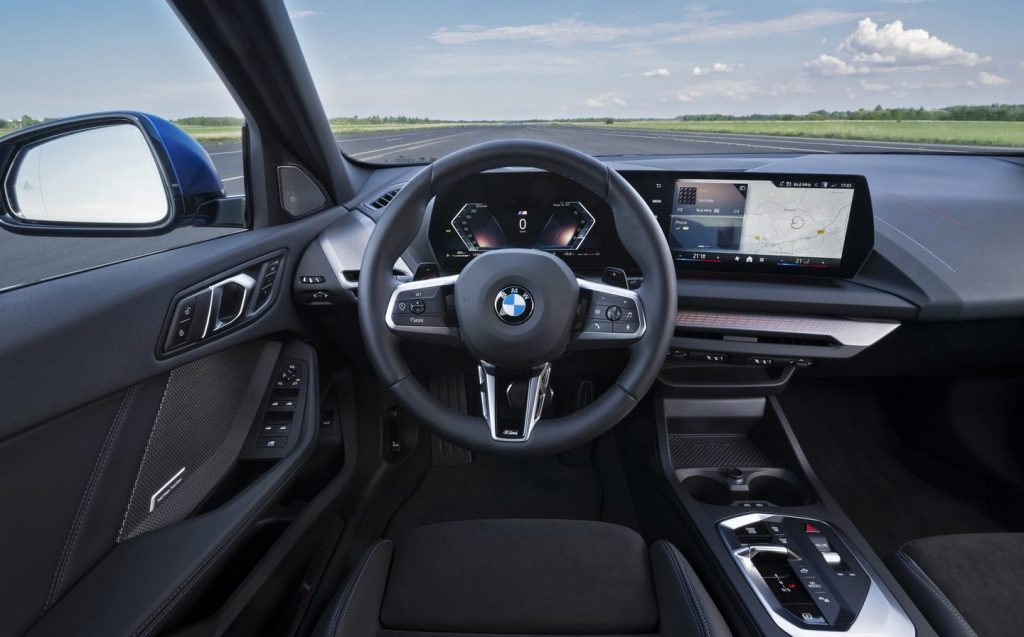
Obviously, such a decision has caused other problems. If you want to do almost anything, whether that’s change the driving mode or switch on a heated seat, you’ll have to delve into the touchscreen menu, and that’s pretty distracting.
In BMW’s defence, the touchscreen in the 1 Series is better than most, because the display is sharp, the menus are mostly logical and it’s quick to respond to inputs, but you still need to avert your eyes from the road to use it. And as with the X1 and 2 Series Active Tourer, the 1 Series does not have the iDrive rotary controller seen in more expensive BMWs to help you navigate the system by feel.
The designers have, however, insisted on leaving the temperature controls at the bottom of the screen no matter which menu or display you’re in, so some of the basic functions are never more than a screen tap away, and that helps to a point but it’s still not as logical as proper physical switchgear.
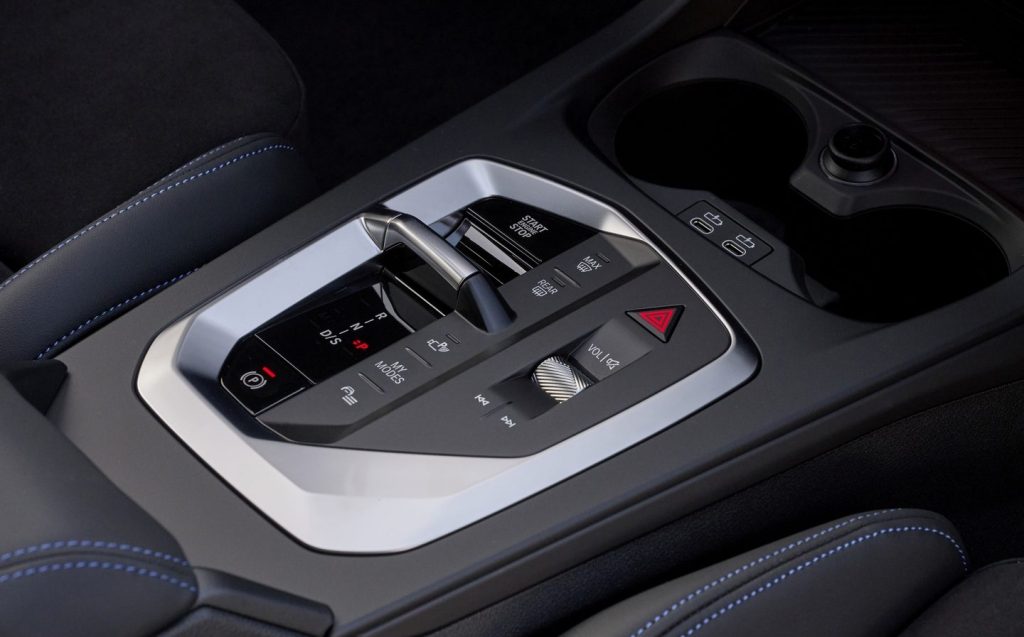
The system also includes a very sharp and highly configurable instrument cluster, and you can have a very good head-up display, which is quite useful.
However, the move to brush away buttons has freed up cabin space for BMW’s material engineers — or, more likely, the accountants — to have their say, and that is a bit of an issue. Margins are always tight in this sector of the market, and though the 1 Series is somehow more solid inside than some larger BMW products (new X3, we’re looking at you), it still has some low-rent materials that spoil the upmarket mood.
Contrary to what some might imagine, the “vegan-friendly” cabin is the least offensive thing about it, with nice materials on the steering wheel and reasonable fabric on the seats, but some of the plastics on the dash and the door panels are as disappointing as vegan cheese. At least most of it feels well screwed together, although we still aren’t convinced by the air vent controls taken from the 5 Series. The 1 Series could have done without those.
It could also have done with a bigger boot. Opt for the M135 and you get an ample 380-litre luggage space, putting the 1 Series on a par with the Volkswagen Golf and somewhere in the middle of its class, but the mild-hybrid technology fitted to the 1.5-litre 120 model we tested cut the available space to just 300 litres. That’s a reduction of almost 25 per cent that leaves you with less capacity than there is in a Seat Ibiza.

Fortunately, rear cabin space is a bit better — you can fit most types of human in there without too much trouble — but while anyone of average height will be perfectly comfortable, taller rear-seat passengers might find headroom and legroom a little more generous in some of the 1 Series’ rivals.
Although the technology might impact boot space, we have to hand it to BMW’s powertrain engineers, who have produced yet another brilliant engine range, albeit a small one at the moment. For now, UK customers get a straight choice between the 120 — a 167bhp 1.5-litre mild-hybrid petrol car we drove — and the M135 xDrive, which is the all-wheel-drive, 2-litre hot hatchback with almost 300bhp. In other markets there are further options, including a less powerful 1.5-litre petrol engine and some diesels, as well as a 2-litre 123 xDrive option that sits between the 120 and the M135, but it’s just the two choices here for the time being.
For most, the 120 will be the engine of choice, and with very good reason. By sending 167bhp through an eight-speed automatic gearbox to the front wheels, it can get from 0-62mph in less than eight seconds, and the mild-hybrid technology makes it incredibly efficient. Officially, it’ll return around 50mpg, and you can’t really complain about that. Sure, a plug-in hybrid would be nice for the company car drivers, but the 120 will be more than adequate for private buyers.
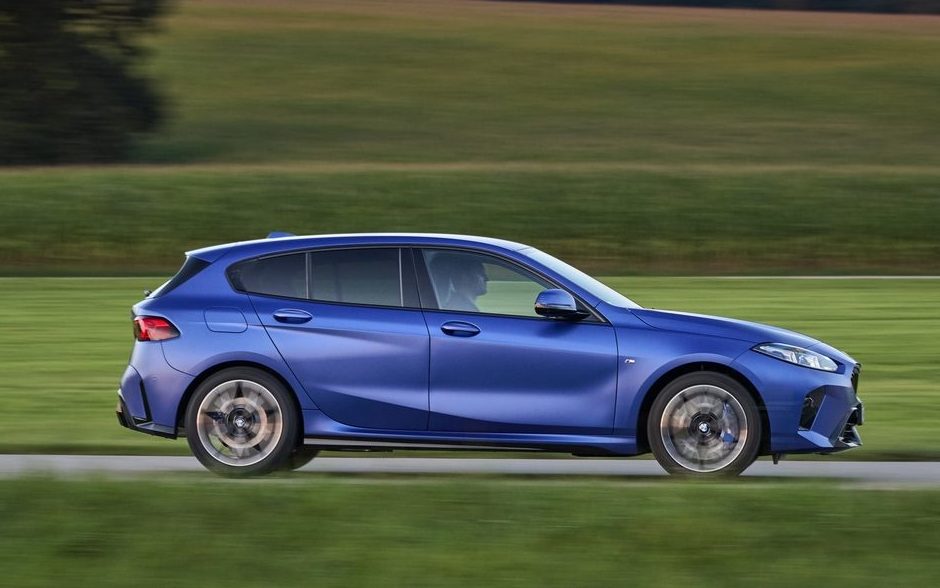
And although the 120 doesn’t have the same suspension set-up as the M135 xDrive, which is faster both in a straight line and in the corners, it’s still a very well-sorted family hatchback that’s more than happy in the bends.
As is typical of BMW, the steering is informative and intuitively progressive, so you get exactly the response you expect when you turn the wheel. The brakes are good, too, although you can sometimes feel the hybrid system and engine interfering as the car tries desperately to save fuel.
Combine that with a very stable platform that feels safe and secure on the road, and you can have a bit of fun in a decidedly non-threatening way. It all feels familiar and comfortable.
If you choose the 120, it will be comfortable even when you aren’t in the bends. This kind of poise often comes with a trade-off in terms of ride comfort, and while there’s an element of that with the 120, it’s nowhere near as bad as it could be. Yes, you can feel the bumps a bit, but they don’t tend to smack you particularly hard, because the suspension takes most of the sting away immediately. It’s all very composed and stable, albeit without feeling particularly silky, and at motorway speeds the 120’s ride impresses even more.
Unfortunately, the same can’t be said of the M135 xDrive, which is quite a bit stiffer. Even on the relatively smooth German asphalt of our test route. Initial compliance over the bigger bumps is quite good, but it feels as though it runs out of tolerance pretty quickly. You’re left with a firm jiggle and a sense that every tiny imperfection is having an impact, particularly on the rear end.
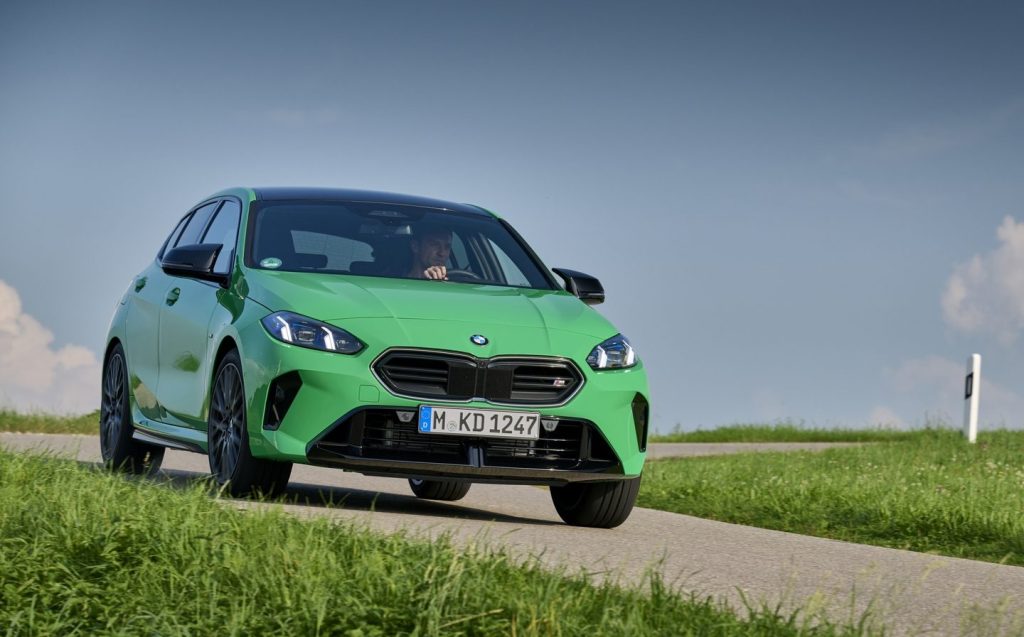
It isn’t disastrous, mind, and it settles quite well at higher speeds, but in a British town centre it’ll probably prove irritatingly uncompromising.
The M135 doesn’t come cheap, either, starting at £43,000. That makes it almost exactly £10,000 more expensive than the 120 in mid-range M Sport trim. It’s that car you see here, and it’s set to be the top seller, merging sporty style with an efficient engine and plenty of kit.

But we think the basic Sport is actually the one to go for, offering a classier exterior finish and a pricetag of just over £31,000 without sacrificing too much equipment. The Curved Display, two-zone climate control and reversing camera are all standard, along with dark aluminium interior trim and 17in alloy wheels.
At that price, the 1 Series costs roughly the same as the equivalent Audi A3, but it’s better to drive and it has a better engine. Yes, the boot space is a bit tight, but if you can deal with that, the looks and some of the disappointing plastics, you’ll get to enjoy one of the best premium hatchbacks on the market. Particularly for those who value the driving experience more than anything else.
But for those more interested in space and quality, it may still struggle to find traction alongside such compelling rivals as the A3, the Merc A-class and even the VW Golf.
Related articles
- If you found this review of the new BMW 1 Series interesting, you may want to read about the forthcoming M5 Saloon
- You might also like to read our review of the BMW M3 Touring
- Have you seen the next-generation BMW M2?
Latest articles
- F1 2025 calendar and race reports: The new Formula One season as it happens
- Seven great automotive events to visit this summer, from F1 to art and champagne
- Watch new Porsche 911 GT3 smash Nürburgring record for manual cars
- Skoda Elroq 2025 review: Czech carmaker can’t seem to miss with its electric family cars
- Five best electric cars to buy in 2025
- Should I buy a diesel car in 2025?
- Zeekr 7X AWD 2025 review: A fast, spacious and high tech premium SUV — but someone call the chassis chief
- Denza Z9GT 2025 review: Flawed but sleek 1,062bhp shooting brake from BYD’s luxury arm
- Extended test: 2024 Renault Scenic E-Tech review


